Pixar movies have captivated audiences worldwide with its groundbreaking computer-animated feature films, starting with the unforgettable adventure “Toy Story” in 1995.
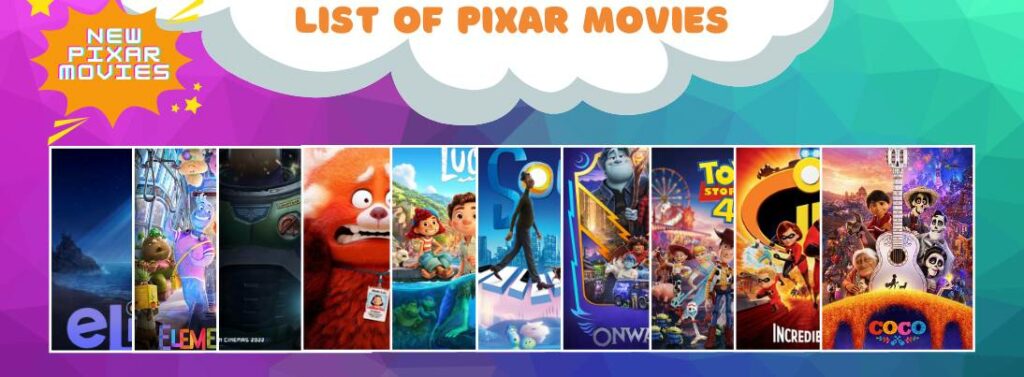
As a pioneer in the CGI animation industry, Pixar films have consistently delivered engaging stories, unforgettable characters, and cutting-edge animation techniques, leaving a lasting mark on the cinematic landscape.
Pixar Movies Checklist ✔
With a total of 28 feature films, Pixar movies have undoubtedly become a staple of animated movies that resonate with people of all ages. In collaboration with Walt Disney Studios, this animation duo is a powerhouse that will be around forever.
Complete List of Pixar Movies
Enjoy our Pixar movies list and check back often for new Pixar movie announcements and new character lists.
28. Elio (2024)
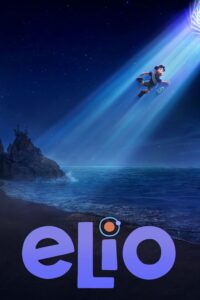
Elio is an upcoming computer-animated science fiction Pixar movie.
The Pixar production team is set to release Elio exclusively in theaters on March 1, 2024.
The film takes place in a futuristic world where people have been calling out to the universe looking for answers and follows the story of a young boy named Elio who embarks on an intergalactic journey to find his father.
The movie explores themes of family, adventure, and the power of determination.
The voice cast includes America Ferrera, Yonas Kibreab, Jameela Jamil, and Brad Garrett. Elio is Pixar’s 28th feature-length film and is directed by Domee Shi, who won an Academy Award for Best Animated Short Film for Bao in 2019.
27. Elemental (2023)
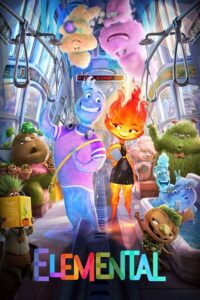
Elemental is a 2023 American computer-animated romantic comedy-drama original film.
Directed by Peter Sohn, the movie is based on his childhood in New York.
The story is set in Element City, where residents of fire, water, land, and air live together.
The movie follows the story of Ember, a tough and quick-witted young woman, and her friendship with a fun-loving water resident named Aqua.
The film explores the four elements and their relationship with each other.
Elemental was released on June 16, 2023. View our complete list of Elemental characters.
26. Lightyear (2022)
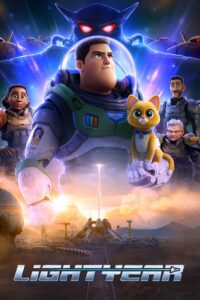
Lightyear is a 2022 American computer-animated science-fiction action-adventure film.
The movie is a spin-off of the Toy Story series and tells the origin story of Buzz Lightyear, the human hero who inspired the toy.
The film follows Buzz on his journey to becoming a space ranger and features a star-studded cast, including Chris Evans as the voice of Buzz Lightyear.
Lightyear was released on June 17, 2022.
25. Turning Red (2022)
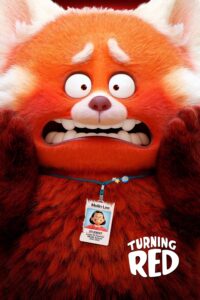
Turning Red is a 2022 American computer-animated fantasy comedy film.
Directed by Domee Shi, the film tells the story of Mei Lee, a 13-year-old girl who transforms into a giant red panda when she gets too excited.
The movie explores Mei Lee’s journey to balance her mother’s expectations with her own desires and navigate the challenges of adolescence.
The film features the voices of Rosalie Chiang as Mei Lee and Sandra Oh as her mother, Ming. Turning Red was released on March 11, 2022.
24. Luca (2021)

Luca is a 2021 American computer-animated coming-of-age fantasy film.
Directed by Enrico Casarosa, the film tells the story of two young sea monsters named Luca and Alberto who venture onto land and disguise themselves as human boys to experience life in an Italian seaside town.
The movie explores themes of friendship, acceptance, and self-discovery. The film features the voices of Jacob Tremblay as Luca and Jack Dylan Grazer as Alberto.
Luca was released on June 18, 2021.
23. Soul (2020)
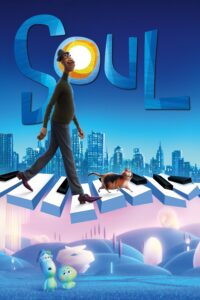
Soul is a 2020 American computer-animated fantasy comedy-drama Pixar film.
Directed by Pete Docter, the film follows the story of Joe Gardner, a middle-school music teacher who dreams of becoming a jazz musician.
After a near-death experience, Joe’s soul is transported to the “You Seminar,” where he meets and mentors a soul named 22.
The movie explores themes of purpose, passion, and the meaning of life. The film features the voices of Jamie Foxx as Joe and Tina Fey as 22.
Rather than bringing in sales at the box office, Soul was released on December 25, 2020, on Disney+ due to the COVID-19 pandemic and won two Academy Awards.
22. Onward (2020)
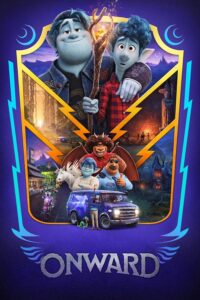
Onward is a 2020 American computer-animated urban fantasy adventure film.
Directed by Dan Scanlon, the film tells the story of two elf brothers, Ian and Barley Lightfoot, who embark on a quest to bring back their father for a day using a magical staff.
The movie explores themes of brotherhood, grief, and the importance of family.
The film features the voices of Tom Holland as Ian, Chris Pratt as Barley, and Julia Louis-Dreyfus as their mother, Laurel.
Onward was released on March 6, 2020.
21. Toy Story 4 (2019)
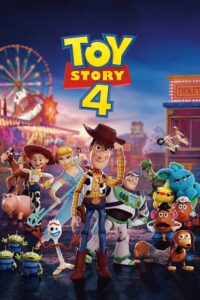
Toy Story 4 is a 2019 American computer-animated comedy-drama film that hit theaters with a lot of excitement.
Directed by Josh Cooley, the movie is the fourth installment in the Toy Story franchise and follows the story of Woody, Buzz Lightyear, and their toy friends as they embark on a road trip with Bonnie and her new toy, Forky.
The film explores themes of loyalty, identity, and the meaning of being a toy.
The movie features the voices of Tom Hanks as Woody, Tim Allen as Buzz Lightyear, and Tony Hale as Forky.
Toy Story 4 was released on June 21, 2019.
20. Incredibles 2 (2018)

Incredibles 2 is a 2018 American computer-animated superhero film.
Directed by Brad Bird, the movie is the sequel to the 2004 film The Incredibles and follows the story of the Parr family as they try to restore the public’s trust in superheroes while balancing their family life.
The film explores themes of family, teamwork, and the role of superheroes in society.
The movie features the voices of Craig T. Nelson as Bob Parr and Mr. Incredible, Holly Hunter as Helen Parr and Elastigirl, and Sarah Vowell as Violet Parr.
Incredibles 2 was released on June 15, 2018.
19. Coco (2017)
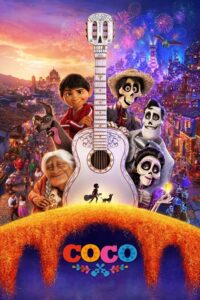
Coco is a 2017 American computer-animated fantasy film.
Directed by Lee Unkrich, the movie follows the story of Miguel, a young boy who dreams of becoming a musician despite his family’s generations-old ban on music.
On Día de los Muertos, Miguel accidentally enters the Land of the Dead and must seek the help of his deceased musician great-great-grandfather to return to the living world.
The film explores themes of family, tradition, and the power of music. The movie features the voices of Anthony Gonzalez as Miguel, Gael García Bernal as Héctor, and Benjamin Bratt as Ernesto de la Cruz.
Coco was released on October 27, 2017, and won two Academy Awards.
18. Cars 3 (2017)
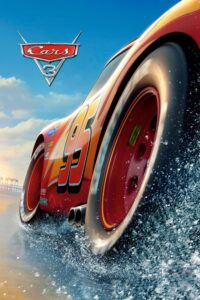
Cars 3 is a 2017 American computer-animated sports comedy-adventure film.
Directed by Brian Fee, the movie is the third installment in the Cars franchise and follows the story of Lightning McQueen, who is struggling to keep up with the new generation of high-tech race cars.
With the help of his trainer, Cruz Ramirez, and some old friends, Lightning sets out to prove that he still has what it takes to be a champion.
The film explores themes of aging, mentorship, and the importance of perseverance.
The movie features the voices of Owen Wilson as Lightning McQueen, Cristela Alonzo as Cruz Ramirez, and Armie Hammer as Jackson Storm.
Cars 3 was released on June 16, 2017.
17. Finding Dory (2016)
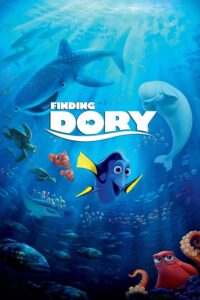
Finding Dory is a 2016 American computer-animated comedy-drama adventure film.
Directed by Andrew Stanton, the movie is a sequel to the 2003 film Finding Nemo and follows the story of Dory, a forgetful blue tang fish who sets out on a journey to find her long-lost parents.
Along the way, Dory is helped by her old friends Marlin and Nemo while also making new friends like Hank, a cantankerous octopus.
The film explores themes of family, friendship, and the power of perseverance.
The movie features the voices of Ellen DeGeneres as Dory, Albert Brooks as Marlin, and Ed O’Neill as Hank.
Finding Dory was released on June 17, 2016.
16. The Good Dinosaur (2015)
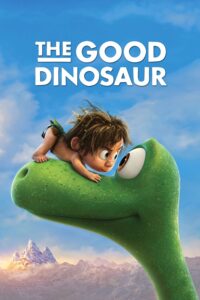
The Good Dinosaur is a 2015 American computer-animated adventure film.
Directed by Peter Sohn, the movie is set in an alternate universe where dinosaurs never went extinct and follows the story of Arlo, a young Apatosaurus who befriends a human boy named Spot.
Together, Arlo and Spot embark on a journey to find their way home and overcome their fears.
The film explores themes of friendship, family, and self-discovery. The movie features the voices of Raymond Ochoa as Arlo and Jack Bright as Spot.
The Good Dinosaur was released on November 25, 2015.
15. Inside Out (2015)
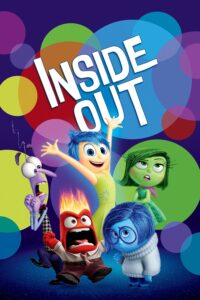
Inside Out is a 2015 American computer-animated comedy-drama film.
Directed by Pete Docter, the movie takes place inside the mind of a young girl named Riley and follows the story of her emotions, Joy, Sadness, Fear, Anger, and Disgust, as they navigate Riley’s life after she moves to a new city.
The film explores themes of emotions, memories, and the importance of balance.
The movie features the voices of Amy Poehler as Joy, Phyllis Smith as Sadness, and Bill Hader as Fear.
Inside Out was released on June 19, 2015, and won an Academy Award.
14. Monsters University (2013)
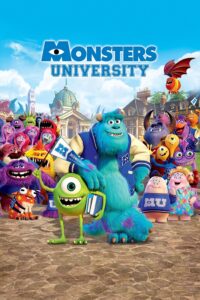
Monsters University is a 2013 American computer-animated comedy film.
Directed by Dan Scanlon, the movie is a prequel to the 2001 film Monsters, Inc. and follows the story of Mike Wazowski and James P. Sullivan during their time at Monsters University, where they start off as rivals but eventually become best friends.
This monster world film explores themes of friendship, self-discovery, and the importance of hard work.
The movie features the voices of Billy Crystal as Mike Wazowski, John Goodman as James P. Sullivan, and Helen Mirren as Dean Hardscrabble.
Monsters University was released on June 21, 2013.
13. Brave (2012)

Brave is a 2012 American computer-animated fantasy film.
Directed by Mark Andrews and Brenda Chapman, the movie takes place in Medieval Scotland and follows the story of Princess Merida, a skilled archer who defies an age-old tradition and unintentionally puts her kingdom in danger.
The film explores themes of bravery, family, and the importance of communication.
The movie features the voices of Kelly Macdonald as Merida, Billy Connolly as King Fergus, and Emma Thompson as Queen Elinor.
Brave was released on June 22, 2012, and won an Academy Award.
12. Cars 2 (2011)

Cars is a 2006 American computer-animated comedy-adventure film.
Directed by John Lasseter, the movie takes place in a world populated entirely by anthropomorphic cars and follows the story of Lightning McQueen, a hotshot rookie race car who finds himself stranded in the rundown town of Radiator Springs.
The film explores themes of friendship, humility, and the importance of community.
The movie features the voices of Owen Wilson as Lightning McQueen, Paul Newman as Doc Hudson, and Bonnie Hunt as Sally Carrera.
Cars was released on June 9, 2006.
11. Toy Story 3 (2010)
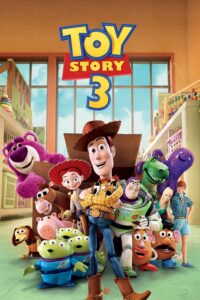
Toy Story 3 is a 2010 American computer-animated comedy-drama film.
Directed by Lee Unkrich, the movie is the third installment in the Toy Story franchise and follows the story of Woody, Buzz Lightyear, and their toy friends as they face an uncertain future when their owner, Andy, prepares to leave for college.
The film explores themes of friendship, loyalty, and the importance of letting go.
The movie features the voices of Tom Hanks as Woody, Tim Allen as Buzz Lightyear, and Joan Cusack as Jessie.
Toy Story 3 was released on June 18, 2010, and won two Academy Awards.
10. Up (2009)

Up is a 2009 American computer-animated comedy-drama adventure film.
Directed by Pete Docter, the movie follows the story of Carl Fredricksen, an elderly widower who sets out on a journey to fulfill his lifelong dream of visiting South America by tying thousands of balloons to his house.
Along the way, Carl befriends a young Wilderness Explorer named Russell and encounters a talking dog named Dug.
The film explores themes of love, loss, and the importance of adventure.
The movie features the voices of Ed Asner as Carl Fredricksen, Jordan Nagai as Russell, and Bob Peterson as Dug.
Up was released on May 29, 2009, and won two Academy Awards.
9. WALL•E (2008)
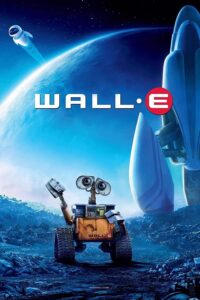
WALL•E is a 2008 American computer-animated science fiction film.
Directed by Andrew Stanton, the movie takes place in the distant future when Earth has become uninhabitable due to waste and pollution and follows the story of WALL•E, a waste-collecting robot that develops a personality and falls in love with another robot named EVE.
The film explores themes of environmentalism, loneliness, and the power of love. The movie features the voices of Ben Burtt as WALL•E and Elissa Knight as EVE.
WALL•E was released on June 27, 2008, and won an Academy Award.
8. Ratatouille (2007)
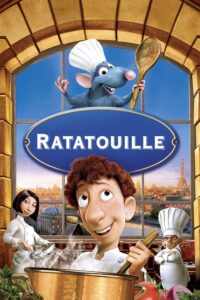
Ratatouille is a 2007 American computer-animated comedy film.
Directed by Brad Bird, the movie follows the story of Remy, a rat who dreams of becoming a chef and forms an unlikely alliance with a young kitchen worker at a famous Paris restaurant.
The film explores themes of friendship, ambition, and the power of following your dreams.
The movie features the voices of Patton Oswalt as Remy, Lou Romano as Linguini, and Peter Sohn as Emile.
Ratatouille premiered on June 22, 2007, and won an Academy Award.
7. Cars (2006)
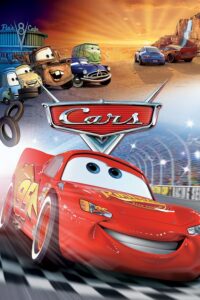
Cars is a 2006 American computer-animated comedy-adventure film.
Directed by John Lasseter, the movie takes place in a world populated entirely by anthropomorphic cars and follows the story of Lightning McQueen, a hotshot rookie race car who finds himself stranded in the rundown town of Radiator Springs.
The film explores themes of friendship, humility, and the importance of community.
The movie features the voices of Owen Wilson as Lightning McQueen, Paul Newman as Doc Hudson, and Bonnie Hunt as Sally Carrera.
Cars was released on June 9, 2006, and won a Golden Globe award.
6. The Incredibles (2004)
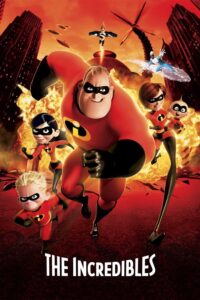
The Incredibles is a 2004 American computer-animated superhero film.
Written and directed by Brad Bird, the movie follows the story of a family of superheroes who are forced to conceal their powers and live a quiet suburban life until they are called upon to save the world from a dangerous villain.
The film explores themes of family, heroism, and the balance between individualism and conformity.
The movie features the voices of Craig T. Nelson as Mr. Incredible, Holly Hunter as Elastigirl, and Samuel L. Jackson as Frozone.
The Incredibles was released on November 5, 2004, and won two Academy Awards.
5. Finding Nemo (2003)
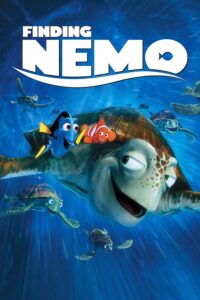
Finding Nemo is a 2003 American computer-animated comedy-drama adventure film.
Directed by Andrew Stanton with co-direction by Lee Unkrich, the screenplay was written by Stanton, Bob Peterson, and David Reynolds from a story by Stanton.
The movie follows the story of a clownfish named Marlin who embarks on a journey to find his son Nemo, who was taken from the Great Barrier Reef and placed in a fish tank in a dentist’s office in Sydney, Australia.
Along the way, Marlin meets a forgetful blue tang fish named Dory who helps him in his quest. The film explores themes of family, friendship, and overcoming fear.
The movie features the voices of Albert Brooks as Marlin, Ellen DeGeneres as Dory, and Alexander Gould as Nemo.
Finding Nemo was released on May 30, 2003, and won an Academy Award.
4. Monsters Inc. (2001)
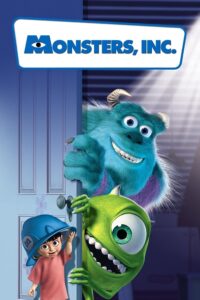
Monsters, Inc. is a 2001 American computer-animated comedy film.
Directed by Pete Docter, the movie takes place in a world inhabited by monsters who generate power by scaring human children.
The story follows the lovable and furry blue monster James P. Sullivan (Sulley) and his wisecracking best friend, the green cyclops monster Mike Wazowski, as they accidentally let a human child named Boo into their world.
The film explores themes of friendship, teamwork, and the power of laughter. The movie features the voices of John Goodman as Sulley, Billy Crystal as Mike Wazowski, and Mary Gibbs as Boo.
Monsters, Inc. was released on November 2, 2001, and won an Academy Award.
3. Toy Story 2 (1999)
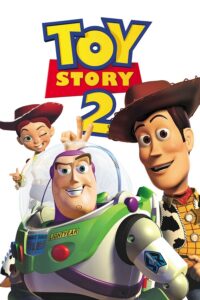
Toy Story 2 is a 1999 American computer-animated comedy film.
Directed by John Lasseter, the movie is the second installment in the Toy Story franchise and follows the story of Woody, Buzz Lightyear, and their toy friends as they try to rescue Woody from a toy collector who plans to sell him to a museum in Japan.
The film explores themes of friendship, loyalty, and the value of toys.
The movie features the voices of Tom Hanks as Woody, Tim Allen as Buzz Lightyear, and Joan Cusack as Jessie.
Toy Story 2 was released on November 24, 1999, and won a Golden Globe.
2. A Bug’s Life (1998)

A Bug’s Life is a 1998 American computer-animated comedy film.
Directed by John Lasseter and co-directed by Andrew Stanton, the movie follows the story of an ant named Flik who recruits a group of circus bugs to help him save his colony from a group of bullying grasshoppers.
The film explores themes of teamwork, bravery, and the power of individuality.
The movie features the voices of Dave Foley as Flik, Kevin Spacey as Hopper, and Julia Louis-Dreyfus as Atta.
A Bug’s Life was released on November 25, 1998, and won a Grammy Award.
1. Toy Story (1995)
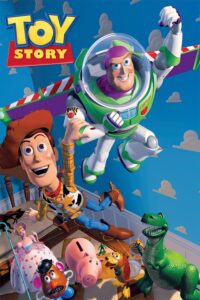
Toy Story is a 1995 American computer-animated comedy film and the first Pixar movie.
Directed by John Lasseter, the movie follows the story of a group of toys owned by a boy named Andy, particularly Woody, a cowboy doll, and Buzz Lightyear, a space ranger, as they come to life and go on a series of adventures.
The film explores themes of friendship, loyalty, and the fear of being replaced.
The movie features the voices of Tom Hanks as Woody, Tim Allen as Buzz Lightyear, and Don Rickles as Mr. Potato Head.
Toy Story was released on November 22, 1995, and won an Academy Award.
Pixar Movies Checklist Infographic

Pixar Movies Are Thriving
Pixar Animation Studios has produced 28 feature films that have captivated audiences of all ages and backgrounds.
From the groundbreaking Toy Story to its next release of Elio, Pixar has consistently delivered visually stunning and emotionally resonant stories that explore important themes such as friendship, family, and perseverance.
Each movie has its own unique charm and memorable characters, from the lovable Woody and Buzz in Toy Story to the adventurous Dory in Finding Nemo.
Pixar’s success has been recognized with numerous awards and accolades, including 18 Academy Awards. With more films in development, including the highly anticipated Elio, Pixar continues to push boundaries and inspire audiences around the world. Watch fun Pixar video clips on YouTube.
We hope you enjoyed our Pixar movies list! This list of Pixar films will continue to grow over time so check back often to see what new movies are being released by Pixar.
To learn more about Pixar’s partnership with the Walt Disney Company then visit our Disney animated movies list.
Popular Pixar Movies Questions
Does Disney own Pixar?
Yes, Pixar is owned by Disney. In 2006, Disney acquired Pixar Animation Studios for approximately $7.4 billion. This partnership has allowed Disney to produce and distribute popular animated films like Toy Story, Finding Nemo, and The Incredibles.

Brandon Crombar
Editor In Chief / FounderBrandon is an animation enthusiast and animated film critic. He has been writing about animation since 2013 to celebrate animated movies, characters, and songs. His favorite animated movies include Finding Nemo, Aladdin, and The Lion King.